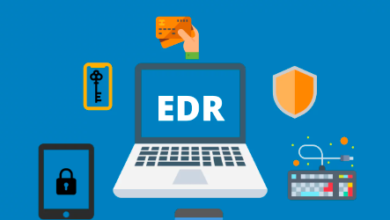Microelectronic Security Measures: Enhancing Protection at the Circuit Level

Technology has become an inseparable part of our daily lives, and with that comes the pressing need to secure it. Whether it’s your smartphone, laptop, or even smart fridge, every device is a potential target for cyber threats. But did you know that security can start right at the core of these devices, at the circuit level? This blog post explores how microelectronic security measures are reshaping the way we protect our technology.
Understanding Microelectronic Security
Microelectronic security measures are essentially techniques and technologies implemented within the hardware of electronic devices to protect them from unauthorized access and tampering. While software security is crucial, focusing on the hardware adds an extra layer of protection that is much harder to bypass. For tech enthusiasts and professionals alike, understanding these measures is essential in today’s digital landscape.
How Security is Implemented at the Circuit Level
1. Hardware Encryption
One of the primary methods used to secure data at the circuit level is hardware encryption. It encrypts data directly on the device’s hardware, providing robust protection against unauthorized access. Unlike software encryption, hardware encryption reduces the risk of having encryption keys exposed to outside threats.
2. Secure Boot
Secure boot ensures that only trusted software runs on a device. It verifies the software’s authenticity and integrity before it loads, preventing malicious code from executing at startup. This feature is especially important in preventing malware from taking hold at the most vulnerable stage of a device’s operation.
3. Tamper Detection
Tamper detection mechanisms alert users or systems if there is an attempt to physically access or alter the hardware. These can include sensors that detect changes in the device’s physical state, such as opening the casing or changing the circuit configuration.
Read also: The Main Types of Data Cables You Need for Your Smart Home
Protecting Against Physical and Cyber Threats
Microelectronic security plays a vital role in defending against both physical and cyber threats. For instance, the infamous “cold boot attack” is a method where attackers retrieve data by freezing RAM chips. With appropriate microelectronic security measures, such as secure boot and tamper detection, these kinds of vulnerabilities can be significantly mitigated.
Real-World Examples
In recent years, there have been numerous reported cases of cyber-attacks on devices lacking robust microelectronic security. For instance, large-scale data breaches often exploit weaknesses in both software and hardware. Implementing security at the circuit level could prevent such attacks by ensuring that even if the software is compromised, accessing the data remains a challenge.
Benefits of Microelectronic Security
Integrating microelectronic security into devices offers several benefits:
- Enhanced Data Protection: By securing data at the hardware level, the risk of unauthorized access and data breaches decreases significantly.
- User Privacy: With better security measures, user data is less likely to be exposed, ensuring greater privacy.
- Device Trustworthiness: A secure device is a reliable device, fostering trust among users and clients.
Challenges and Considerations
Implementing microelectronic security isn’t without its challenges. One major consideration is cost, as adding security features at the circuit level can increase production expenses. Additionally, there are performance concerns, as some security measures might impact processing speed. Scalability is another challenge, especially as devices grow more complex.
Future Trends in Microelectronic Security
The future of microelectronic security is promising, with several exciting developments on the horizon:
- Quantum-Safe Cryptography: With the rise of quantum computing, traditional encryption methods may become vulnerable. Thus, developing quantum-safe cryptographic algorithms is critical.
- Secure Elements in IoT Devices: As the number of IoT devices grows, integrating secure elements at the hardware level becomes essential to ensure safe connectivity and operation.
Practical Advice for Professionals
For electronics engineers and cybersecurity experts looking to integrate microelectronic security into their designs, consider the following:
- Stay Updated: Keep abreast of the latest advancements in hardware security technologies and standards.
- Collaborate with Experts: Work closely with cybersecurity professionals who specialize in hardware security to design robust systems.
- Prioritize Security in Design: Incorporate security measures early in the design process rather than as an afterthought.
Conclusion
Microelectronic security measures are not just an option but a necessity in the modern world of technology. By securing devices at the circuit level, we can significantly enhance protection against a myriad of threats. For tech enthusiasts, electronics engineers, and cybersecurity professionals, understanding and implementing these measures is key to building safer, more reliable devices.







